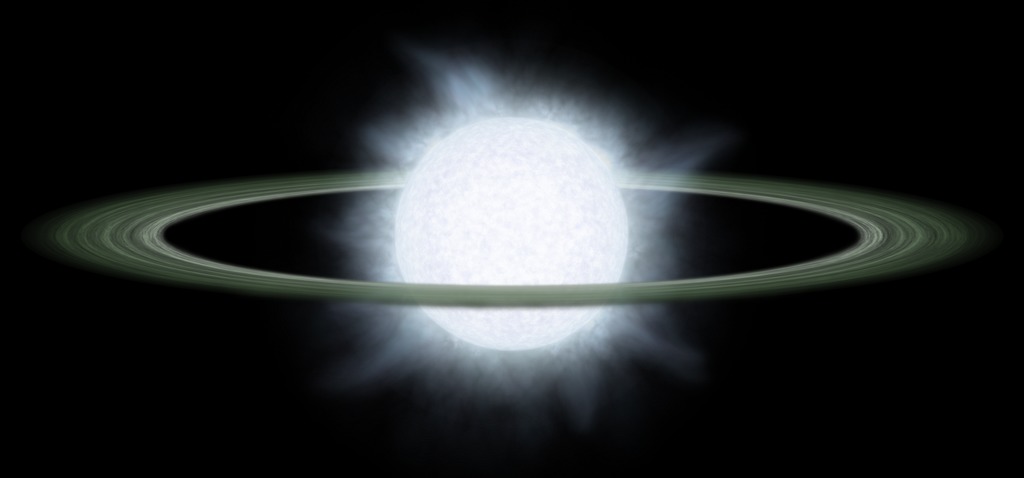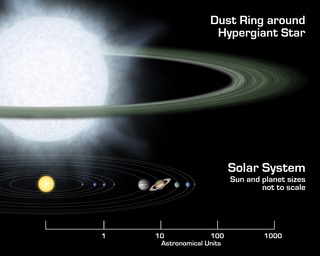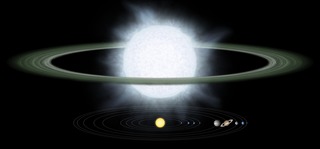
Credit: NASA/JPL-Caltech/R. Hurt (SSC)
Artwork • February 8th, 2006 • ssc2006-05b2
ssc2006-05b2
Monstrous disks like this one were discovered around two "hypergiant" stars by NASA's Spitzer Space Telescope. Astronomers believe these disks might contain the early "seeds" of planets, or possibly leftover debris from planets that already formed.The hypergiant stars, called R 66 and R 126, are located about 170,000 light-years away in our Milky Way's nearest neighbor galaxy, the Large Magellanic Cloud. The stars are about 100 times wider than the sun, or big enough to encompass an orbit equivalent to Earth's. The plump stars are heavy, at 30 and 70 times the mass of the sun, respectively. They are the most massive stars known to sport disks.The disks themselves are also bloated, with masses equal to several Jupiters. The disks begin at a distance approximately 120 times greater than that between Earth and the sun, or 120 astronomical units, and terminate at a distance of about 2,500 astronomical units.Hypergiant stars are the puffed-up, aging descendants of the most massive class of stars, called "O" stars. The stars are so massive that their cores ultimately collapse under their own weight, triggering incredible explosions called supernovae. If any planets circled near the stars during one of these blasts, they would most likely be destroyed.
About the Object
- Name
- Type
- Star > Circumstellar Material > Disk > Protoplanetary
- Star > Circumstellar Material > Disk > Debris
- Star > Spectral Type > O






